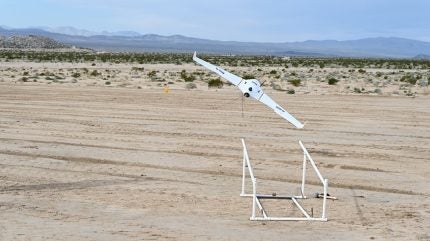
A successful trial took place that tested the collaborative artificial intelligence (AI) and autonomy among thee partner nations – Australia, the US and UK – under the auspices of the trilateral AUKUS alliance.
It is the “first use of autonomy and AI sensing systems in a real-time military environment,” according to a statement from the UK Ministry of Defence on 9 August 2024.
The trial integrated several autonomous uncrewed aerial vehicles (UAVs) from each country to locate, disable and destroy ground-based targets. AUKUS nations used the systems to reduce the time it takes to identify enemy targets and operate with reduced risk to life.
Interoperability and data exchange
Commodore Rachel Singleton, head of the Defence Artificial Intelligence Centre, and UK lead for AUKUS AI and Autonomy Working Group, stated:
“The AUKUS partnership is key to ensuring that the systems designed by each nation are interoperable into the future. Service personnel from one nation will be supported by capabilities that have been developed across all three nations.”
Once proven, the participants will incorporate this technology onto national platforms, providing militaries with operational advantage through a quicker response to current and future threats.
How well do you really know your competitors?
Access the most comprehensive Company Profiles on the market, powered by GlobalData. Save hours of research. Gain competitive edge.

Thank you!
Your download email will arrive shortly
Not ready to buy yet? Download a free sample
We are confident about the unique quality of our Company Profiles. However, we want you to make the most beneficial decision for your business, so we offer a free sample that you can download by submitting the below form
By GlobalDataThe exchange of data and control demonstrated the progress that AUKUS Pillar II has made in the trilateral adoption of AI and autonomous systems.
No plan in sight
The trial, which is part of a series named AUKUS Resilient and Autonomous Artificial Intelligence Technologies (RAAIT), took place as part of the annual US-hosted multinational Project Convergence experimentation exercise.
It demonstrated the significant improvements AUKUS partners have made to the application and viability of RAAIT since the first UK trial in April 2023.
While partners entrenched Pillar I with specific guidelines and legalities in delivering nuclear-powered submarines to Australia into the 2040s and beyond, Pillar II is all-encompassing, covering a range of areas from deep space to quantum, and it is a lot less codified.
The Pillar II segment is structured according to where the three nations see there is ability for technological collaboration. For example, new capabilities are being tested to protect platforms, such as protecting armoured vehicles from electronic warfare, laser and GPS attacks.
During a panel discussing Pillar II, one Australian industry commentator, Kate Louis, head of Defence and National Security, AI Group, commented on the need to codify Pillar II efforts in some way.
“We have a real sense of urgency from an Australian perspective… to get into the tent… even having a plan for the next five, ten years.”



